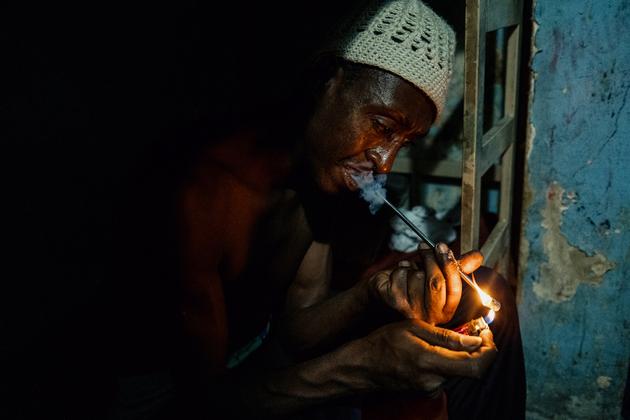


Sao Paulo's ghosts of crack cocaine: 'We must integrate them into the city, not exclude them'
FeatureAs in the major urban centers across the world, the scourge of crack cocaine has taken root in the Brazilian megalopolis. For 30 years, hundreds of drug users have been living amid appalling sanitary conditions, delinquency and prostitution in 'Cracolândia.'
Day breaks on Brazil's saddest beach, strewn with flip-flops, crumpled sarongs and empty condom wrappers. On this early April morning, the long night's survivors lay on the ground, arms outstretched, face down. Some gazed wearily at the big red sun peeking over the tops of the buildings. Here and there, dozens of sleepwalkers wandered silently, their steps uncertain. In their clenched fists, they held tightly to a small golden crystal: a shameful treasure known as "crack."
Forget the glitz of Ipanema or Copacabana. Here, there is no sea and no sand; nothing but hard, grimy, unglamorous concrete. "Cracolândia" is the name of this bleak shore inhabited by stranded sailors, one of the world's largest open drug scenes, right in the middle of Sao Paulo. It's "dope Disneyland" or a "stoner's paradise" for some; the "Wild West" or "Brazil's Babylon" for others. According to many, it's a war zone. "The navel and butt of the world," as the locals often say.
"I'm the worst of them all!" bragged Renato Oliveira Júnior, known as "Renatinho." Aged 32, the skinny and lively young Black man has built a solid reputation as the life of the party in "Craco." A native of the Paulista coastline, a former cell phone thief and ex-cocaine user turned crack addict, he once went so far as to sell his mother's fridge on the sly for some hard drugs. However, Renatinho is also a professional dancer. His samba moves are a big hit with the fluxo regulars.
Immediate dependence
The fluxo, or "flow," refers to the unpredictable and shifting mass of drug addicts, clustered together along the 200 meters of the Rua dos Protestantes, in the Santa Ifigênia district, among dilapidated buildings and old warehouses. In this court of miracles (or curses), amid the din of screams and complaints, you meet odd characters, tattooed from head to toe; Blacks wearing rags and Whites in shirtsleeves.
A man sporting a top hat took a plastic truck for a walk on a leash. Another dragged a carry-on suitcase, as if on a sudden journey to a faraway land. An elderly lady in a wheelchair passed a Kurt Cobain lookalike with bloodied lips. A curious gentleman, his face masked in women's lingerie, greeted a former futsal champion. A witch, high as a kite and with an aura of an exorcist about her, brushed past shy couples in jogging suits holding hands and one-night stand participants kissing voraciously. Hardly anyone was smiling. Everyone was smoking, except the dogs.

Today, there are a good thousand of these urban ghosts, causing the proud and wealthy Sao Paulo to tremble. It's been 30 years since Cracolândia set up camp in the heart of this gigantic megalopolis of 25 million, the largest city in Brazil and the Southern Hemisphere. Thirty years of terror, shame and fascination, furious repression, resilience and resignation. It has been to no avail in the face of a scourge – crack cocaine – which, from Paris to Vancouver (British Columbia, Canada), including Amsterdam and New York, strikes the major urban centers of the world.
You have 86.81% of this article left to read. The rest is for subscribers only.
